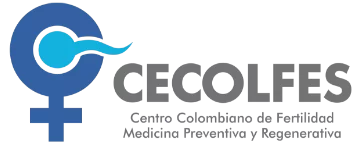We evaluate our patients to determine the possible cause of their infertility and make recommendations on the best personalized treatment option to achieve pregnancy
Directed intercourses
Directed intercourses are based on stimulation of the ovaries with fertility drugs to produce a small number of eggs and to allow natural fertilization by sexual intercourse.
Patients are monitored by transvaginal ultrasound and sometimes by measuring hormones in the blood, until ovulation is approaching. Once we confirm that ovulation will be imminent, we inform the couple to have intercourse the day before of ovulation, the day of ovulation and the day after ovulation.
For this treatment, semen should not have any alteration in terms of number, morphology and/or motility of sperm cells.
This treatment is used to help the following patients:
-Unexplained infertility
-Patients without hormonal disorders
-Mild Endometriosis
-Polycystic Ovary Syndrome
The probability of pregnancy in each attempt directed relations is 15%.


IUI – Intrauterine Insemination
This procedure is ideal for those cases where there is a difficulty of the passage of sperm through the cervix, either by alterations in semen quality (low sperm count or low motility) or cervical mucus.
This procedure can also help in cases where the infertility is apparently inexplicable. It is also used in single patients, those with no current partner, who want to do a treatment using semen from our bank.
For many couples, artificial insemination is the first step, since the treatment is less complex and less costly compared to other more complex assisted reproduction techniques. Nowadays, this technique offers 12 – 14% of chance of pregnancy success.
MILD IVF
Mild IVF treatment is an In-Vitro Fertilization procedure that gets fewer eggs using minimal ovarian stimulation compared to those obtained with conventional stimulation. As part of this technique, we get low number of eggs but better quality, eliminating the likelihood of ovarian hyperstimulation syndrome and reducing the chances of multiple pregnancies.
This treatment is shorter, easier, and friendly. This has allowed us the use of lesser doses of medications, lesser psychological impact, and decrease the cost of IVF treatment.
Patients with low-quality eggs from conventional IVF treatments have improved egg quality using this technique, achieving optimal embryo, and giving rise chances to get a pregnancy.


ICSI – Intracytoplasmic Sperm Injection
It is an assisted reproduction technique that involves the injection of a sperm into an egg to achieve fertilization. ICSI is used mainly in those cases of male infertility factor.
P ICSI – Choosing the Best Sperm in Real Time
This technique allows selecting the best sperm used to fertilize the egg through ICSI technique. Once the sperm selection is done by ICSI P technique, we proceed to perform ICSI procedure.
Selection of cases to this procedure is aimed on causes of male factor, especially when the semen analysis reveals a high incidence of morphological sperm abnormalities or unexplained infertility.


IVM: In-Vitro Maturation of Oocytes
IVM treatment of In-Vitro Fertilization involves retrieving or aspirating immature eggs from the ovary to place them in a special medium to achieve maturity in the laboratory.
ICSI procedure is performed on in-vitro matured oocytes to achieve fertilization.
Approximately 48 hours later, the resulting embryos will be transferred back to the uterus.
IVM appears to be a promising treatment for infertility, especially for women with Polycystic Ovary (PCO) or polycystic ovarian syndrome (PCOS). PCO is the most common disorder among women of reproductive age that combines different factors such as endocrine disruption and overweight, resulting in menstrual disorders, anovulatory cycles, and high risk of developing ovarian hyperstimulation syndrome (OHSS). Because no ovarian stimulation is required, the risk of OHSS can be avoided by IVM treatment, especially in women with PCO / PCOS.
Natural Cycle IVF
This is an in-vivo fertility procedure (done within the body of the woman) in which a naturally matured egg is removed from the ovary during the spontaneous natural cycle. This egg is usually the best quality that women can produce (even better than those obtained by stimulation with drugs) and give to the couple a great opportunity to get a pregnancy.
Natural cycle IVF is becoming an increasingly popular alternative as a method of fertility. In CECOLFES, our pledge is “less is more”, which means that we have developed an effective protocol to help women who want to set up a fertility treatment without any medication and using a single matured egg. This natural protocol will be monitored by ultrasound and blood tests and it is recommended for older women showing low reproductive health and producing few eggs even with drug stimulation. Natural cycle IVF also helps women who want to avoid health risks, reduce discomfort and stress with the use of medications giving rise to reduce costs of treatment.
Natural Cycle IVF gives us the opportunity to offer fertility options using one egg and not having to cancel your treatment by low egg production.

Modified Natural Cycle
It is a technique of In-Vitro Fertilization using the natural cycle of women, which is monitored by transvaginal ultrasound examination and hormonal lab tests.
Once the follicle has the right size, is retrieved to achieve embryonic development and fertilization, before being transferred to the uterus.
TTOMI (Tubal Transfer of Microinjected Oocytes)
is an In-Vivo procedure (done within the body of the woman) that combines two techniques: 1) IVF via vaginal egg retrieval and ICSI technique, and 2) Transfer of these microinjected eggs to the Fallopian Tube (natural incubation place – where fertilization normally should occurs) via laparoscopic technique.
The main requirements are:
•At least one tube completely normal.
•All other indications are the same as for IVF and ICSI.


